Charlotte, NC Pollen and Allergy Report for Summer 2023
Pollen Allergy Trends in Charlotte, NC
When is pollen lowest in Charlotte, NC?

February
Lowest month total PPM
Avg. PPM
When is pollen highest in Charlotte, NC?

April
Highest month total PPM
Avg. PPM
How does pollen in Charlotte, NC compare to North Carolina?
Charlotte has a lower average PPM than the state of North Carolina.
Charlotte yearly avg PPM:
North Carolina yearly avg PPM:
How does pollen in Charlotte, NC compare to the USA?
Charlotte has a higher average PPM than the USA.
Charlotte yearly avg PPM:
USA yearly avg PPM:
Is pollen worse this year in Charlotte, NC?
Spring 2023 was better than spring 2022.
Spring 2023 PPM:
Spring 2022 PPM:
Average PPM in Charlotte, NC
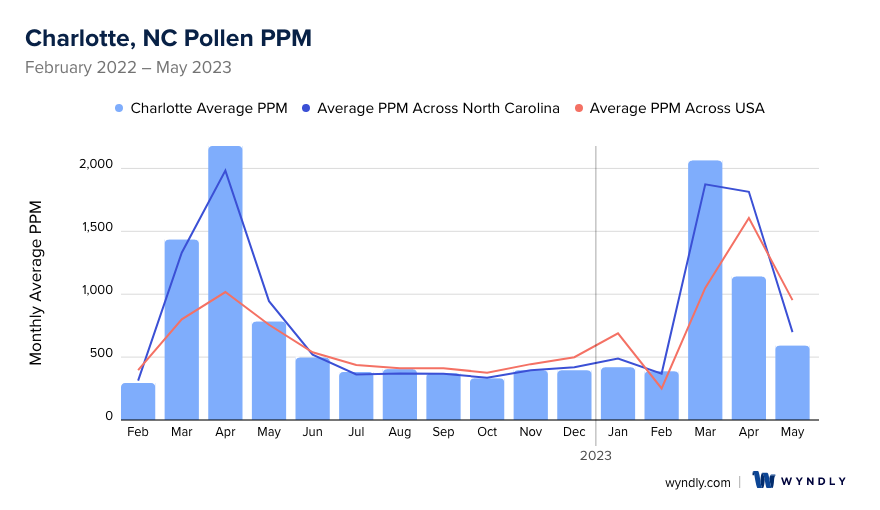
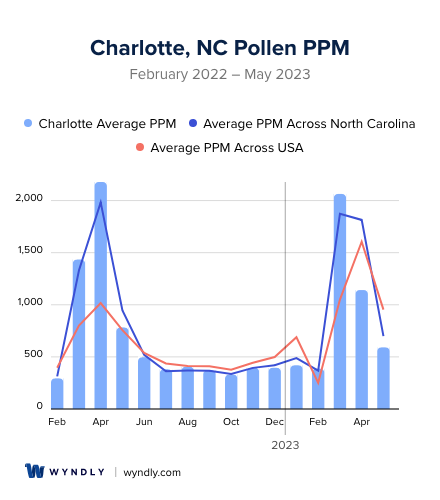
Charlotte, NC Pollen and Allergy Breakdown by Month
Grass
When is grass pollen highest in Charlotte, NC?
April has the highest grass pollen in Charlotte, NC with an average PPM of
When is grass pollen lowest in Charlotte, NC?
December has the lowest grass pollen in Charlotte, NC with an average PPM of
Tree
When is tree pollen highest in Charlotte, NC?
March has the highest tree pollen in Charlotte, NC with an average PPM of
When is tree pollen lowest in Charlotte, NC?
October has the lowest tree pollen in Charlotte, NC with an average PPM of
Weed
When is weed pollen highest in Charlotte, NC?
April has the highest weed pollen in Charlotte, NC with an average PPM of
When is weed pollen lowest in Charlotte, NC?
February has the lowest weed pollen in Charlotte, NC with an average PPM of
Charlotte, NC Pollen Monthly Breakdown by Pollen Type
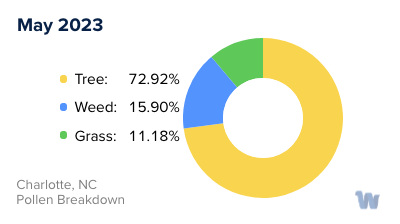
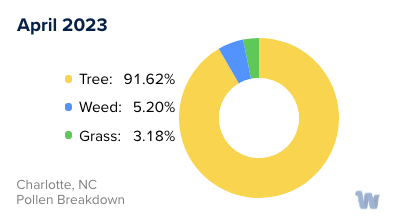
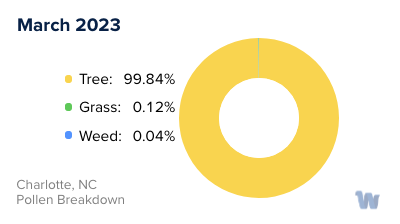
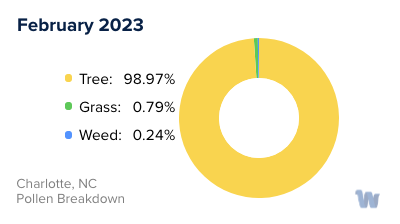

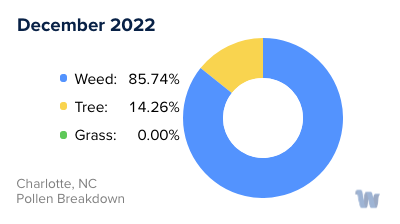
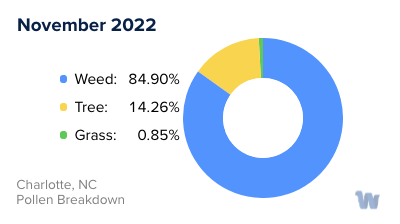

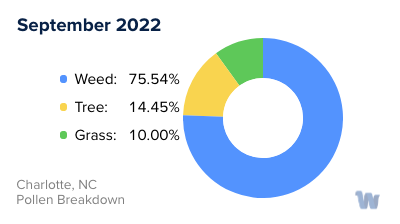




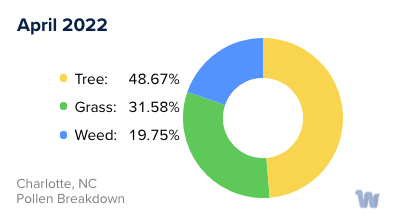

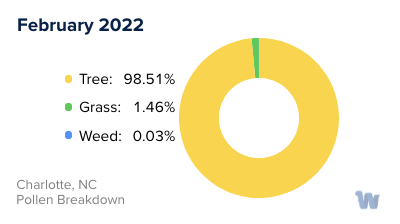
Pollen and Hay Fever in Charlotte, NC
Pollen allergies, also known as hay fever or seasonal allergies, are common in the vibrant city of Charlotte, North Carolina, due to the high concentration of plant life in the region. The pollen season in Charlotte is marked by the release of pollen from various grasses, trees, and weeds, which can lead to a range of allergy symptoms.
Charlotte's pollen season commences in the spring, typically in late February or early March, coinciding with the city's milder winter conditions. The primary pollen producers during this time are trees, with tree pollen serving as the main allergen in the spring. As the city transitions into the summer months, grasses become the predominant pollen producers. Some of the common grasses that contribute to pollen levels during this period include Bermuda grass, Zoysia grass, Ryegrass, and Fescue grass.
As the season progresses, the late summer and fall see an increase in weed pollen, with weeds such as ragweed contributing significantly to the pollen count. The pollen season in Charlotte extends until the end of fall, making it a prolonged period for those sensitive to pollen.
The allergy season typically peaks in April, May, and September. During these months, the pollen count is at its highest, leading to an increase in allergy symptoms for those affected. These peak periods are influenced by various factors, including the city's diverse plant life that includes trees like River Birch, Hickory, Oak, American Beech, and Yellow Polar.
In conclusion, the city of Charlotte, North Carolina, with its diverse landscape and abundant plant life, experiences a high pollen count throughout the allergy season. This variety of pollen sources, from trees to grasses and weeds, contributes to the city's distinct allergy seasons, offering a unique challenge to those managing pollen allergies in the region.


